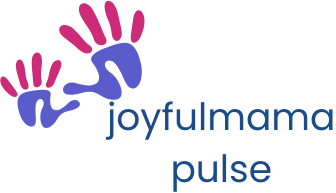Table of Contents
ToggleWhen it comes to caring for children in need, two terms often get tossed around: adoption and fostering. While they might sound like interchangeable phrases in a game of family bingo, they actually represent very different journeys. Understanding these differences can help potential caregivers make informed choices that could change lives—maybe even their own.
Adoption is like finding your perfect match on a dating app, but instead of swiping right, you’re committing to a lifelong relationship. Fostering, on the other hand, is more like a temporary couch-surfing arrangement for kids who need a safe place to land. Each path has its own unique challenges and rewards, and knowing what sets them apart can help anyone navigate the heartwarming world of child welfare with confidence and a dash of humor.
Understanding Adoption
Adoption signifies a permanent legal relationship between a child and a new parent. It forms lifelong bonds that provide stability, security, and love for the child.
Definition of Adoption
Adoption involves transferring parental rights from birth parents to adoptive parents. This process establishes a new, legal parent-child relationship for the child. Adopted children gain the same rights as biological children, including inheritance and parental support. The commitment essential for adoption outlines its enduring nature, ensuring that adoptive parents dedicate themselves to kids regardless of age or background.
Types of Adoption
Several types of adoption exist to meet different needs. Domestic adoption focuses on children within the same country. International adoption allows adoptive parents to welcome children from other countries. Foster-to-adopt provides a pathway for families to adopt children after fostering them. Stepparent adoption occurs when a stepparent adopts their spouse’s child, strengthening family ties. Each type of adoption has distinct processes, regulations, and emotional implications, which families must consider before proceeding.
Understanding Fostering

Fostering provides temporary care for children who cannot remain with their birth parents. Children in foster care often require a stable environment until they can safely return home or find a permanent placement.
Definition of Fostering
Fostering involves placing a child with a caregiver to ensure their safety and well-being. This arrangement supports children facing challenges at home or those in the child welfare system. Caregivers receive training and resources to address children’s physical, emotional, and educational needs. Unlike adoption, fostering doesn’t establish a permanent legal relationship between the child and the caregiver.
Types of Fostering
Fostering encompasses several types to meet diverse needs. Short-term fostering provides temporary homes for children awaiting reunification with their families or placement in a permanent setting. Long-term fostering offers stable, ongoing care when family reunification is not possible. Respite fostering gives temporary relief to regular foster families, supporting both caregivers and children during challenging times. Each type of fostering serves specific situations, helping children find the care they require during difficult periods.
Key Differences Between Adoption and Fostering
Both adoption and fostering serve essential functions in child welfare but differ significantly in several critical aspects.
Legal Aspects
Adoption creates a permanent legal relationship. It transfers all parental rights from the birth parents to the adoptive parents. Adopted children gain the same legal rights as biological children. In contrast, fostering does not confer legal parental rights. Caregivers provide temporary care but retain no legal authority over the child.
Duration and Commitment
Adoption entails a lifelong commitment. Adoptive parents become the child’s permanent guardians. This commitment often lasts until the child reaches adulthood. On the other hand, fostering is typically short-term. Caregivers may care for children for days, months, or years, depending on the child’s individual circumstances.
Parental Rights and Responsibilities
Adoptive parents assume full parental rights and responsibilities. They must provide for the child’s emotional, physical, and educational needs. Caregivers in a fostering arrangement maintain responsibility for care but do not hold legal parental rights. Fostering focuses on providing support during a transitional phase, aiming to reunite children with their birth families when appropriate.
Benefits and Challenges of Each
Adoption and fostering come with unique advantages and hurdles. Understanding these can help potential caregivers make informed choices.
Benefits of Adoption
Adoption provides lifelong stability and security for children. Adoptive parents create permanent family bonds, fostering emotional connections that help children thrive. Legal rights transfer from biological parents, ensuring that adopted children enjoy the same privileges as birth children. Financial assistance, such as tax credits, often eases the burden for adoptive families. Additionally, the adoptive process allows parents to select a child that fits their family dynamics, enhancing compatibility.
Benefits of Fostering
Fostering offers immediate care for children in need. A supportive environment helps children facing temporary crises regain stability. Caregivers receive training and support, equipping them to address diverse emotional and educational needs. Flexibility in the fostering process enables families to adapt to short-term or long-term commitments based on their resources. Respite fostering allows caregivers to take breaks while ensuring children remain in safe, loving homes.
Challenges of Adoption
Adoption involves complex legal procedures and emotional considerations. Navigating adoption laws can be daunting, requiring significant paperwork and patience. Some adoptive parents face challenges with attachment, as children may have experienced trauma affecting their ability to bond. The financial impact can also be considerable, with costs associated with legal fees and potential adoption agency expenses. Parents may receive scrutiny from family and friends, adding to the emotional weight.
Challenges of Fostering
Fostering presents unique challenges, particularly due to the temporary nature of care. Caregivers may struggle with the emotional toll of separation when children reunite with birth families or transition to permanent homes. Unpredictable situations can arise, requiring flexibility and adaptability on the part of caregivers. Additionally, fostering can involve behavioral challenges in children who have experienced trauma, demanding extensive patience and resources. Support networks for foster families can vary in effectiveness, leaving some caregivers feeling isolated.
Understanding the differences between adoption and fostering is crucial for anyone considering becoming a caregiver. Each path offers unique experiences and responsibilities that cater to different needs within the child welfare system. While adoption fosters lifelong bonds and stability, fostering serves as a vital support system for children in transition.
Potential caregivers should reflect on their own circumstances and readiness for commitment when choosing between these two options. By making informed decisions, they can contribute positively to the lives of children in need, ensuring that every child has the chance for a safe and nurturing environment.





